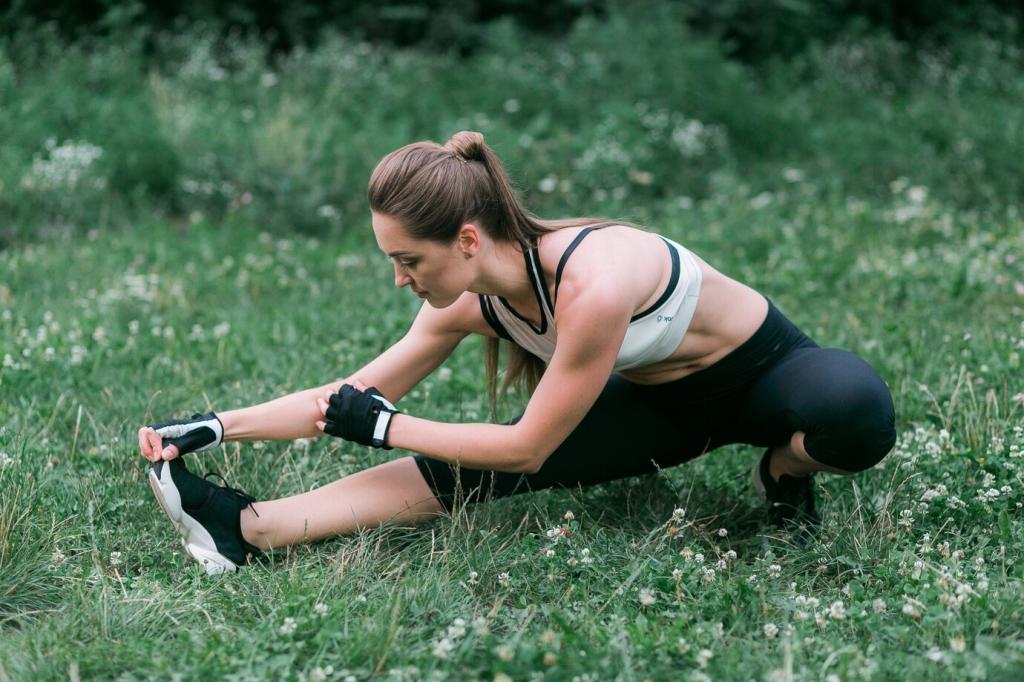
Beginner-Friendly Cardio Workouts at Home
Chosen theme: Beginner-Friendly Cardio Workouts at Home. Welcome! This is your friendly starting line for building stamina, confidence, and joy—right in your living room. We’ll keep it simple, safe, and motivating so you can move today, feel great, and come back tomorrow for more. Subscribe to join our weekly beginner boosts!
Create Your Safe, Energizing Space
Clear a small area the size of a yoga mat, wear supportive shoes, and keep water nearby. Good lighting, a fan, and your favorite playlist instantly lift energy. Set a simple timer and place a chair at the edge for balance support. Snap a before-photo and share your setup!
Warm Up in Three Gentle Phases
Start with mobility: neck nods, shoulder rolls, ankle circles. Add a light pulse: marching in place and arm swings. Finish with dynamic range: side taps and gentle knee lifts. Three to five minutes primes muscles, raises temperature, and tells your mind, “We’re moving—safely.” Comment your favorite warm-up song!
Know Your Effort: Talk Test and RPE
Use the talk test: you should speak in short sentences, not gasping. Pair it with RPE (1–10). Beginners aim for 4–6, a comfortable challenge. If breathing becomes choppy, ease down. As your stamina grows, nudge toward 6 while keeping form crisp and controlled.
Low-Impact Moves That Feel Good and Work
Start marching tall, lift knees gently, and swing relaxed arms. Transition into step-touch with a soft knee bend and a smile. Add light punches to engage your upper body. Keep your torso upright, core braced, and feet whisper-quiet. Share your favorite two-move combo below to inspire another beginner.
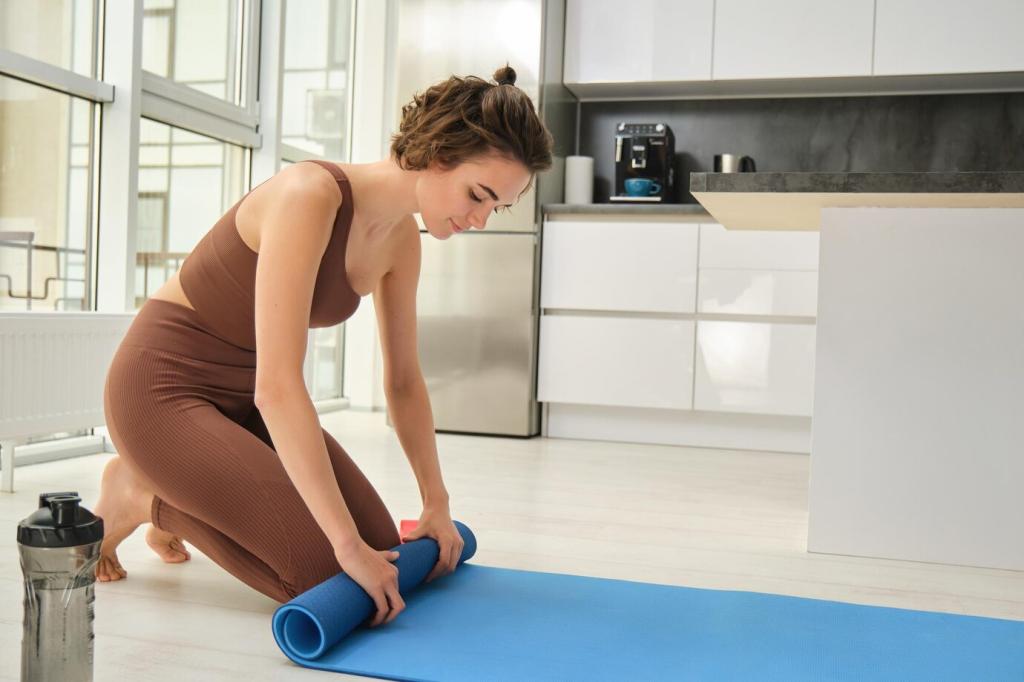
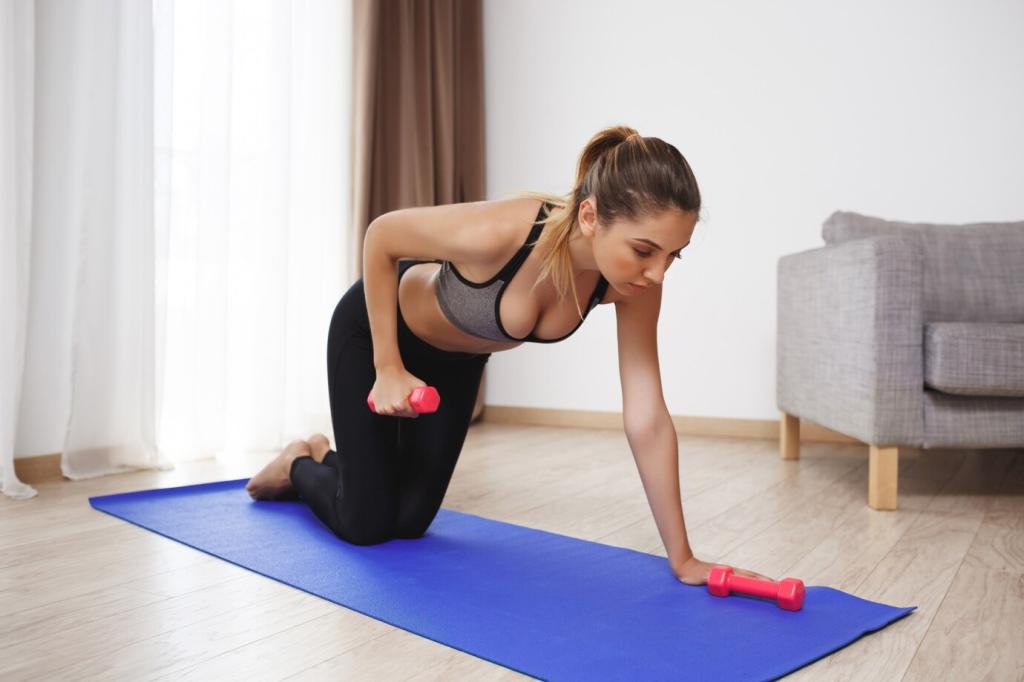
Low-Impact Moves That Feel Good and Work
Step one foot out while arms rise overhead, then return and switch sides. It mimics jumping jacks, minus the impact. Mix in lateral taps with a soft hip hinge to wake glutes. Move rhythmically, land softly, and keep shoulders relaxed. Two minutes here feels surprisingly energizing.
A 15-Minute Beginner Cardio Circuit You Can Repeat
The Plan: Five Moves, Two Rounds
Do forty seconds each: march, step-touch, standing jacks, boxer shuffle, knee lifts. Rest twenty seconds between moves, sip water, then repeat the circuit. Keep pace conversational. As confidence grows, add five seconds per round. Subscribe for a printable version and weekly variations tailored to beginners.
Modifications for Knees, Back, and Balance
Use a chair for light fingertip support during knee lifts. Shorten your step range, land softly, and keep knees tracking over toes. Maintain a neutral spine and relaxed shoulders. If balance wobbles, widen your stance. Remember: smaller, cleaner movements beat bigger, sloppy ones every single time.
Cool-Down and Stretch
Slow your march, breathe deeply, and let your heart rate drift down. Stretch calves at the wall, hinge to lengthen hamstrings, open your chest with clasped hands, and release hip flexors with a gentle lunge. Three to five minutes here helps recovery and makes tomorrow’s workout feel easier.
Technique and Safety: Form Before Speed
Stand tall with a long crown and soft knees. Stack ribcage over pelvis, brace the core gently, relax your shoulders, and keep your gaze forward. Move arms from the shoulders, not the neck. Film a ten-second clip to check form. Comment your best alignment cue to help fellow beginners.
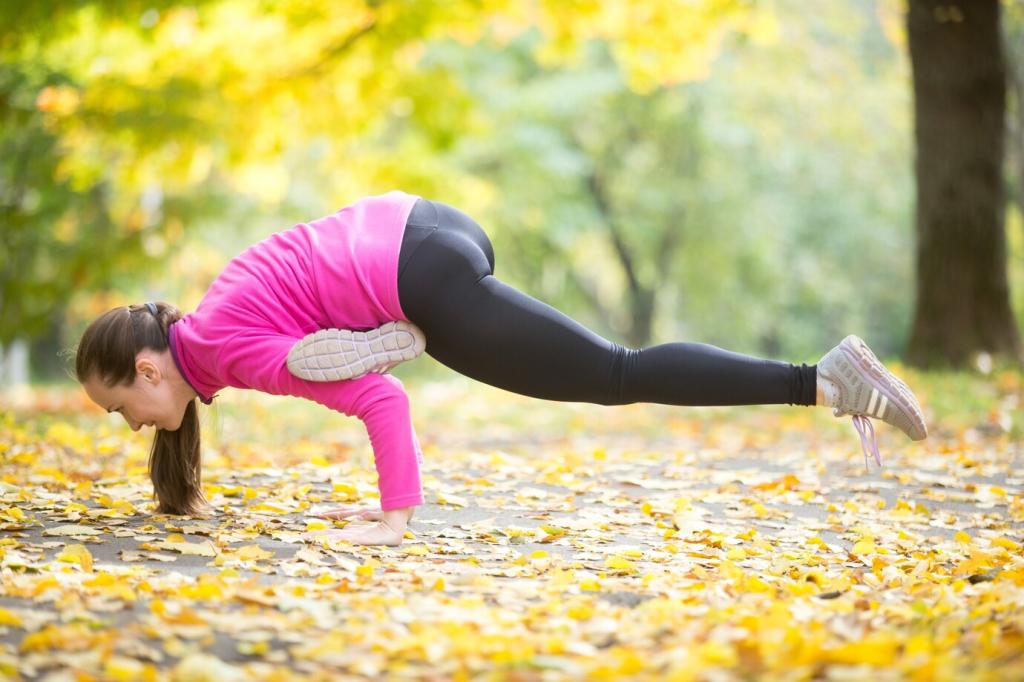
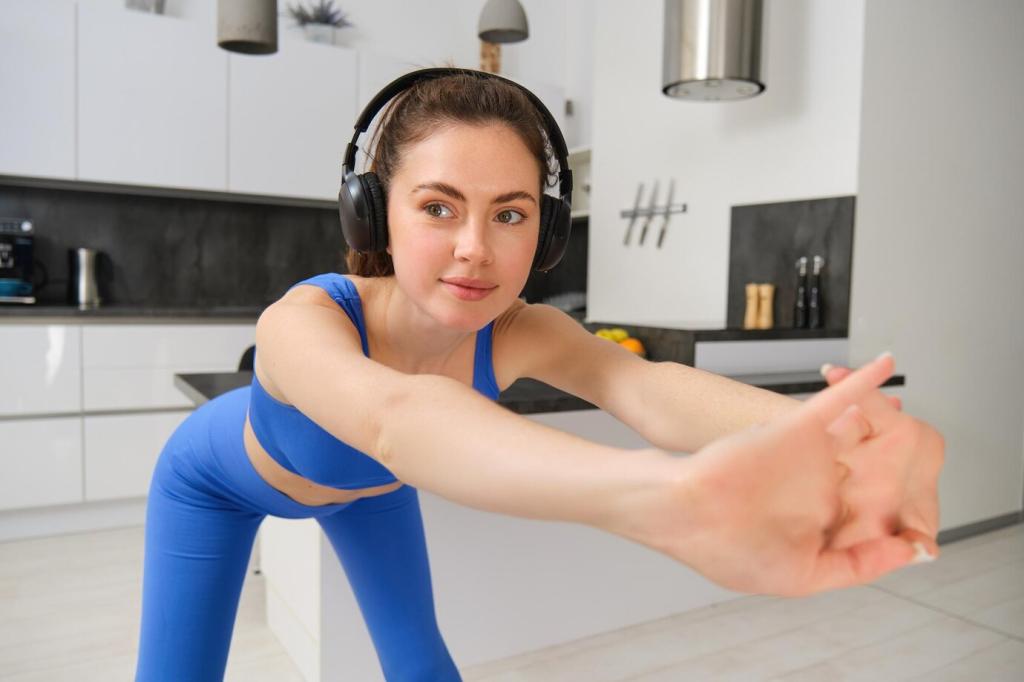
Technique and Safety: Form Before Speed
Inhale through the nose, exhale through the mouth, matching breath to rhythm. Exhale on effort, especially during punches or knee lifts. Avoid breath-holding, which spikes tension and reduces stamina. Smooth breathing supports endurance and calm focus. Try counting your exhale for four beats to settle nerves.
Tiny Wins and Visible Tracking
Mark your calendar after every session, even five minutes. Pair workouts with routines you already do, like brewing coffee. Celebrate micro-milestones: three sessions this week, a smoother warm-up, steadier balance. Share your first streak in the comments and subscribe for weekly check-ins that keep you moving.
Story: Maya’s First Week at Home
Maya started with ten minutes daily, worried about coordination. By midweek she felt steadier and added standing jacks without jumps. On day seven she noticed better sleep and lighter moods. Her takeaway: short, consistent sessions beat perfection. What resonated with you from Maya’s story? Tell us below.
Community and Accountability
Invite a friend, choose a shared playlist, and text each other a post-workout emoji. Comment your favorite low-impact move to help newcomers. Subscribe for beginner-friendly challenges and supportive reminders. If you’re new to exercise or have health concerns, consider a quick medical check before ramping intensity.
Your First Week Plan and How to Adapt It
01
Day 1: 10 minutes basics. Day 2: mobility and stretch. Day 3: 12 minutes circuit. Day 4: rest walk. Day 5: 15 minutes circuit. Day 6: optional light intervals. Day 7: celebrate with a feel-good session. Comment which day felt best and why—it helps you notice real progress.
02
Scale up by adding arm swings, slightly bigger steps, or five extra seconds per interval. Scale down by shortening sets, slowing the pace, or taking longer rests. Keep effort around RPE 4–6. Small, honest adjustments keep training enjoyable and sustainable, which is the real beginner superpower.
03
Choose a next-step goal: an extra minute, a new move, or a second weekly circuit. Take a quick progress photo, hydrate, and note how you feel. Subscribe for fresh beginner-friendly cardio plans, and share your first-week reflections below to cheer on the next reader starting today.
